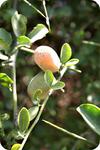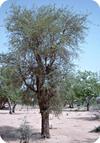VANILLA BEANS | SOYBEAN OIL | SOYMEAL & CAKE | COCOA BEANS | COFFEE BEANS
Balanites aegyptiaca (desert date)

Balanites aegyptiaca (desert date) in Uganda
What you can use the plant for:
Medicine (roots, bark, fruit), food (fruit, leaves) , firewood, Charcoal, poles, gum, fencing (branches), Oil (fruit), fish poison.
To buy this plant or its products click here.
Plant species Name(s)
Balanites aegyptiaca (desert date)
Balanites aegyptiaca is a species of tree, classified either as a member of the Zygophyllaceae or the Balanitaceae. This tree is native to much of Africa and parts of the Middle East.
There are many common names for this plant. In English the fruit has been called desert date, soap berry tree or bush, Thron tree, Egyptian myrobalan,
Egyptian balsam or Zachum oil tree; in Arabic it is known as lalob, hidjihi, inteishit, and heglig (hijlij). In Hausa it is called aduwa, in Swahili mchunju and in Amharic bedena.5
Plant Local name(s)
Runyoro (mutete),
Ateso (Ekorete),
Luganda (dialect)
Buruli (Musongole),
Lugbara & Madi (Logba, Loba),
Where to find this Plant in Uganda
You will typically find this Tree plant in North Eastern Uganda, Low areas of Arua district, Butiaba flats and near Kasese town.
The Balanites aegyptiaca tree reaches 10 m (33 ft) in height with a generally narrow form. The branches have long, straight green spines arranged in spirals. The dark green compound leaves grow out of the base of the spines and are made up of two leaflets which are variable in size and shape. The fluted trunk has grayish-brown, ragged bark with yellow-green patches where it is shed.
The tree produces several forms of inflorescence bearing yellow-green bisexual flowers with five long greenish petals. In Senegal, they are pollinated by halictid bees, including Halictus gibber, and flies, including Rhinia apicalis and Chrysomia chloropiza.
To buy this plant or its products click here.
Join in and write your own page! It's easy to do. How? Simply click here to return to Plants Guide.
Haven't yet found what you Want...?
If you haven't yet found what you were looking for or you need detailed information about the subject matter on this page then... feel free to ask our business travel consultants. |







